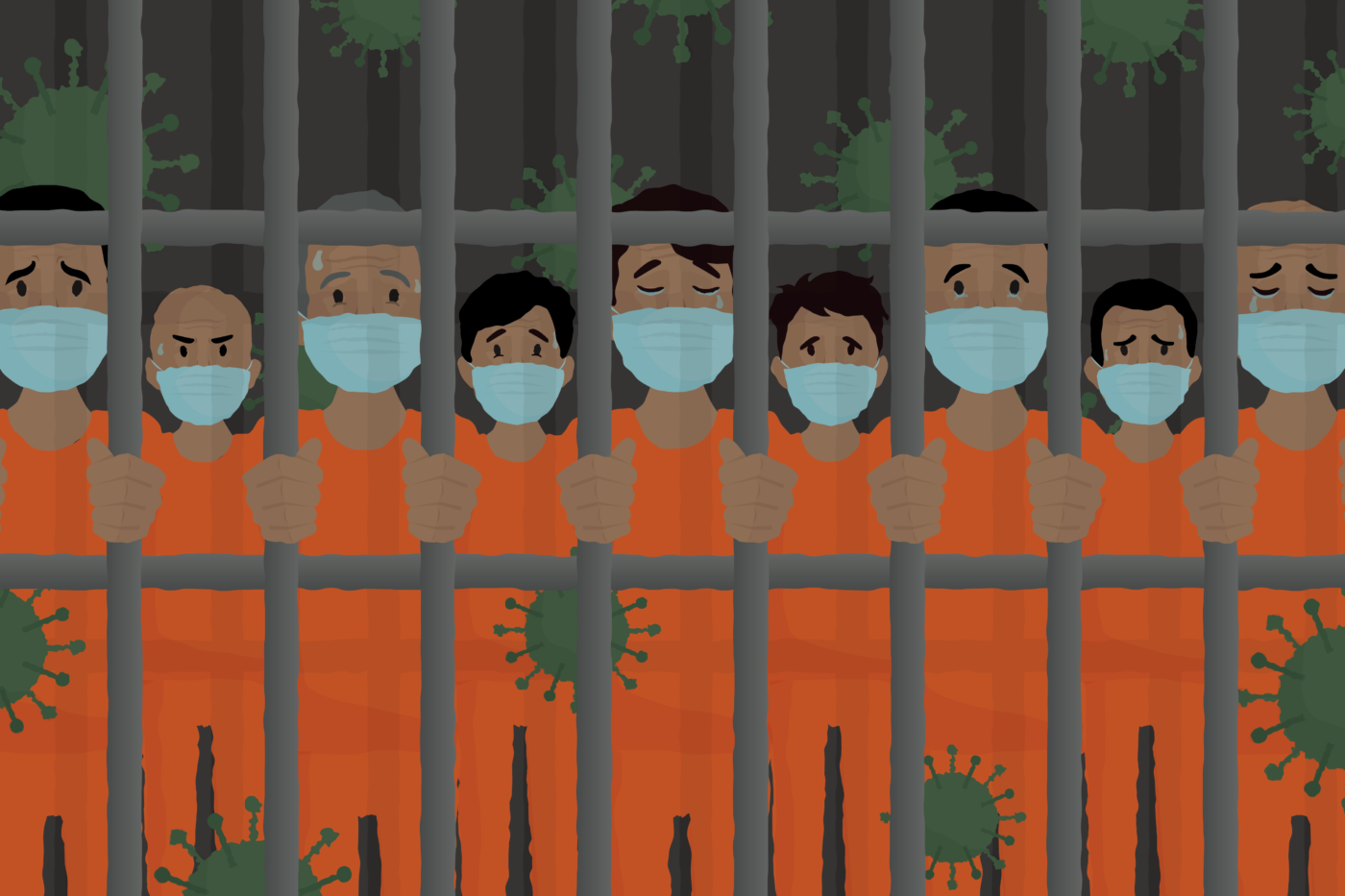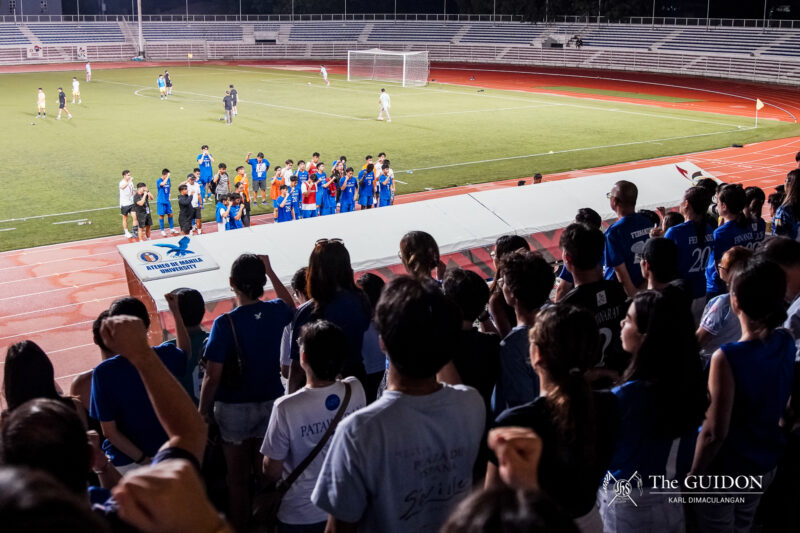WITH THE onslaught of the COVID-19 pandemic, health and hygiene protocols have become the norm—but in a “new normal” that has ushered in the birth of socially-distanced realities and the death of social gatherings, persons deprived of liberty (PDL) are anything but protected behind bars.
As the world’s second most congested penal system, the Philippine prison system has long struggled with overcrowding and unsanitary facilities, among other issues. With PDLs becoming increasingly vulnerable to human rights violations and exposure to COVID-19, their state reflects deeply-rooted institutional and bureaucratic pitfalls. These include the stigma against prisoners and their rehabilitation, ultimately laying the foundation for how we treat those behind bars.
Under luck and key
Low quality food, poor ventilation, and inadequate sanitation are other problems that plague Philippine prisons. For instance, Cavite Provincial Jail medical assistants handled the corpse of a Nigerian inmate with little protective medical equipment, who was later found to have had COVID-19. In addition, the New Bilibid Prison (NBP) alone exceeds its capacity by over 400%.
Amid these issues, Philippine Jesuit Prison Service Executive Director Eli Lumbo, SJ mentioned that the Bureau of Corrections (BuCor) and the Bureau of Jail Management and Penology (BJMP) have been conducting efforts to prevent the spread of COVID-19 in these prisons. Some of these measures include the suspension of visitations, disinfections, provision of face masks, and isolation facilities.
However, in lieu of mass testing, the Department of Health is only conducting “targeted testing” in select facilities where cases are high. Additionally, the prison system has also been struggling with a lack of personnel. Even prior to the pandemic, the actual ratio of personnel to PDL for city and municipal jails was at 1:24 compared to the ideal ratio of 1:7. This large difference leads prison personnel to rely on inmate gangs or pangkats to maintain order in the prison especially in cases of conflict between inmates.
Inmate gangs, having increased in number during the pandemic, have already caused several violent riots in prison. According to Lumbo, the rise in riots may have been caused by the lack of family visits and outreach programs due to the pandemic. “[Until now], it’s still lockdown—no visits from anyone from the outside is allowed. That’s why we think—a number of us think—that’s why the riots happened,” he said.
“Parang nawawala na ang ‘loob’ ang mga bilanggo (It seems that the prisoners are starting to lose themselves). What makes them deal with incarceration are the visits from loved ones. But now, nawala yun, so kaya riots (But now, that’s gone, thus the riots). Before the pandemic, riots have been almost nil.”
At the core of these concerns lies the lack of funding—or where existing funds go, Lumbo suggests. From the Php 246.1 billion allocated for the Department of the Interior and Local Government in the 2021 proposed national budget, a meager Php 19.8 billion was allocated to the BJMP. Moreover, the BJMP has not allotted funds to build new jails despite persistent over congestion. Even food, a basic human necessity, is allocated only Php 60 per prisoner a day—leaving a scant Php 20 per meal. During a joint Senate probe in 2019, former NBP inmate Godfrey Gamboa explained that inmates were only fed with broth and often died due to malnutrition.
On debt row
The looming chaos of the pandemic, however, is not without its gains. As the local transmission of the virus began in early March, the Supreme Court released thousands of PDLs in a bid to decongest the country’s vulnerable prisons. By October, Chief Justice Diosdado Peralta stated in a video conference that 81,888 PDLs had been freed—albeit conditionally for some—between March 17 and October 16. For a number of PDLs, this would be their first taste of liberty in years.
To those often brushing with the law, legal or otherwise, it is no secret that the Philippine legal system often trudges slowly. Prison reform expert Raymund Narag revealed that some PDLs can go as long as 16 years awaiting trial, thus unnecessarily incarcerating them far longer than need be. Going beyond the stipulated six-month period in the revised case guidelines, this has contributed to heavy prison congestion as more individuals are admitted than released.
Similarly, these prevailing institutional and bureaucratic issues within the mainstream system are understood to result in prejudicial inclinations against PDLs. Humanitarian Legal Assistance Foundation Executive Director Atty. Rommel Abitria observed that some communities are ill-equipped to welcome PDLs back to society—in part due to social stigmas PDLs must grapple with after release.
“Is it better for the baby [referring to the late-Baby River] to be separated from the mother PDL?” questioned Abitria. “Or is it just better for PDLs to be inside the jails so they will not do harm to society? The answer would always be in favor of warehousing the PDL in jail.”
Prisoner of conscience
The narrow prioritization of security and order within the prison system, as opposed to rehabilitation and reformation, may only serve to toughen the inmates that live within—hampering their reintegration into the world beyond the cell. With Narag’s recount, this is also projected to only worsen as the cycle tapers at release and reintegration.
“Because really we should not blame them alone—of course they are at fault, but we also are at fault. We should ask ourselves, ‘What have I done or what have I not done to address this situation?’ So, this is bigger than Bilibid, this is bigger than the PDLs, this is bigger than us,” Lumbo stressed.
However, with incarceration comes rehabilitation—an often downplayed legal mandate within BuCor and even the BJMP. As Lumbo pointed out, BuCor follows a twin mandate: Safekeeping and reformation. According to its website, BuCor has a number of reformation programs in place to facilitate the rehabilitation of PDLs in areas such as moral-spiritual and livelihood.
Lumbo recognizes and commends the efforts BuCor has made in rehabilitating PDLs but admits that there is still a long way to go. “I was talking with one [BJMP] official who was here [in NBP], and he said, ‘Parang ano na mangyayari sa mga PDL? (What’s happening to the PDLs?) They’ve been here five years, 10 years, and what reformation have they received?’” he recounted.
Manila Auxiliary Bishop Broderick Pabillo echoed said woes when he lamented in a mass in November the saddening and infuriating conditions of prisons—places he claimed should be rehabilitation facilities, yet seem anything but. He ended the mass by reminding listeners that PDLs are still human beings deserving of attention and care.
With all that has been said on the humanity of PDLs, it all boils down to remembering that they are no different from the people outside of prison. For as long as social stigmas against PDLs persist, their hope for reintegration remains far out of arm’s reach. In this regard, Lumbo asserts that those behind bars may not be the only ones who lack and need rehabilitation; those on the opposite end may also need some rehabilitation of their own.
“It’s not just rehabilitating the PDLs, but also rehabilitating people outside, yes? They also have to change perceptions of people inside,” Lumbo posited. “That’s why conversion is an ongoing progress not just for those in prison but also for us. We’re learning as we go on.”




